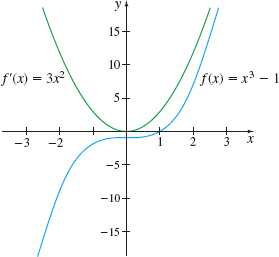EXAMPLE 4Graphing a Function and Its Derivative
Find f′ if f(x)=x3−1. Then graph y=f(x) and y=f′(x) on the same set of coordinate axes.
Solution f(x)=x3−1 so f(x+h)=(x+h)3−1=x3+3hx2+3h2x+h3−1 Using form (3), we find f′(x)=lim
The graphs of f and f^\prime are shown in Figure 9.
